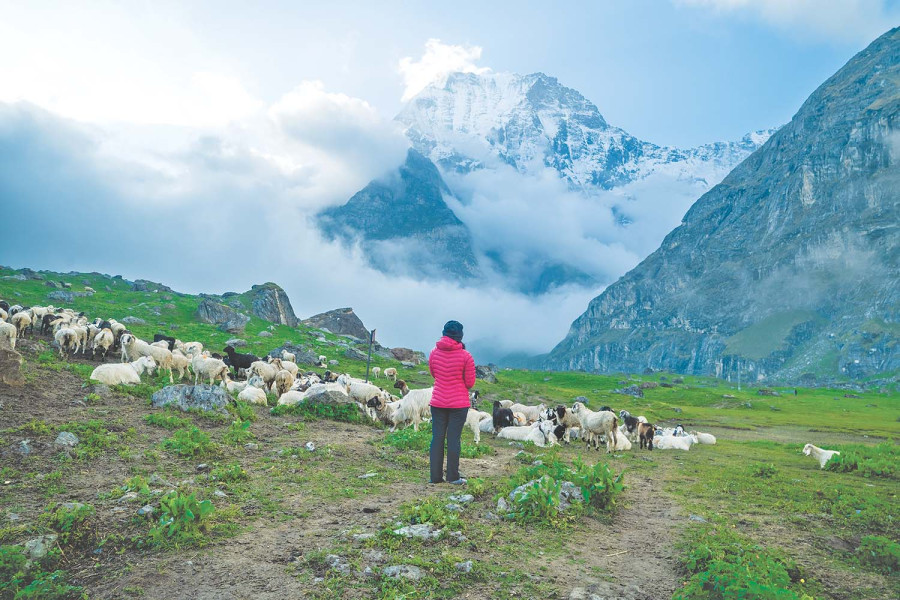
SATV Kathmandu, Aug 09: On September 1, the cost of climbing the world’s highest mountain will rise steeply. Nepal has announced that the per person Everest climbing permit fee will jump from $11,000 to $15,000. Other peaks will also see their prices adjusted, with rates varying by height, location, and season.
But amid the hike, there is a rare gift for adventurers. Ninety-seven Himalayan peaks—remote, rugged, and little known—will be free to climb for the next two years.
The decision, revealed in Cabinet meeting minutes made public on August 3, targets some of Nepal’s farthest-flung mountains. Starting July 17, 2025, climbers will be able to attempt peaks ranging from 5,870 metres to 7,132 metres without paying government royalties. Seventy-seven of these peaks are in Karnali province, and the remaining 20 in Sudurpaschim.
“These are some of the most remote parts of Nepal,” said Himal Gautam, director at the Department of Tourism. “Despite their breathtaking beauty, the number of tourists and mountaineers here is very low as access is so difficult. We hope the new provision will help.”
For decades, these areas—fringed with jagged summits, deep valleys, and sparse settlements—have remained far from the tourist trail. Roads are few, trails are long, and basic services are almost nonexistent. Poverty, deprivation, and marginalisation run deep here, and the Human Development Index rankings are among the lowest in the country.
Yet the promise is undeniable. “Such initiatives highlight our unexplored tourism products and destinations,” said Gautam. “They can create jobs, generate income, and strengthen the local economy.”
Tourism entrepreneur and Nepal Tourism Board member Rajendra Lama agrees but warns that policy alone will not be enough. “We need coordinated efforts between the public, private, and community sectors, along with aggressive publicity,” he said. “Only then will Karnali and Sudurpaschim find their place on the mountaineering map.”
In the shadow of these mountains, life is harsh. Winters are brutal, healthcare is distant, and jobs scarce. Climate change, too, is adding to the burden—melting glaciers, shifting weather patterns, and new risks for both people and wildlife. To Lama, this also makes the region a living laboratory. “Researchers could study how climate change has evolved here and how people are coping,” he said.
A recent regulatory change might also steer climbers toward these free peaks.
Under the Integrated Tourism Bill, registered in Nepal’s upper house of Parliament on April 18, anyone wishing to scale Everest must first have summited a mountain over 7,000 metres within Nepal. That makes Sudurpaschim’s 7,030-metre Saipal, 7,132-metre Api, and 7,076-metre Api West—now royalty-free—ideal training grounds.
Until now, interest has been negligible. In the past two years, only 21 teams—68 climbers in total—have ventured to these 97 peaks, earning the government just Rs1.4 million in fees. Standard charges range from $175 to $500 for foreign climbers, depending on altitude and popularity.
Elsewhere in Nepal, mountaineering is big business. In 2024 alone, climbing fees brought in $5.92 million, with Everest accounting for a staggering $4.52 million—77 percent of the total. The privately run Nepal Mountaineering Association, which manages 27 peaks, earned $146,500 in 2024.
By comparison, Karnali and Sudurpaschim’s peaks barely register. Many have never been summited— they are ‘virgin mountains’ in the words of tourism officials.
Efforts to promote them are not new. In July 2008, the government waived climbing fees for certain peaks in the Mid-Western and Far-Western regions for five years, later extending the scheme until 2018. Another push came ahead of the Visit Nepal 2020 campaign, when mountains like Api, Saipal, Ganesh Himal, and Gyalzen Peak were made free to climb. That effort was cut short by the Covid pandemic.
Nepal is home to 3,310 peaks over 5,500 metres—some walkable, many requiring technical climbing gear. Of these, 461 are open for commercial expeditions, and 102 remain unclimbed. Fifteen are trekking peaks below 6,000 metres.
For Karnali and Sudurpaschim, the next two years could be a turning point—or another missed opportunity. The mountains are there, waiting. The challenge now is to convince the world to come.



















